The mid-size 3-row segment is one of the hottest in the auto market, but there are also increasingly more and more options. Whether or not you believe it in other areas of life, it’s hard to deny that size does matter in this segment and is one of the keyways to stand out among all the rivals. And this comparison is going to be focused on two of the newest and two of the largest options: the Toyota Grand Highlander and the Chevy Traverse. So, who wins in a 2024 Toyota Grand Highlander vs. 2024 Chevy Traverse battle? That’s the question we’re going to answer today!
Pricing and Equipment
Now like always, let’s quickly establish the pricing and trim levels right from the start. Beginning with the all-new Traverse, all that space is not coming cheap, since the fully loaded RS trim rings in at $58,090.
Traverse RS AWD: $56,200 | Options: +$495 | Destination: $1,395 | Total: $58,090
For the Grand Highlander, the same money will also get you the fully loaded model called Platinum Hybrid Max, at $59,460.
GH Platinum Hybrid Max AWD: $58,125 | Options: +$0 | Destination: $1,335 | Total: $59,460
By the way, if you want to get the best price from local dealerships and access to invoice pricing info for these two models or any vehicle, we have a tool on our website to do just that. Click here for more information!
Exterior Design
Starting here with the exteriors, both models have toughed up over their predecessors, or in the case of the Grand Highlander, the regular version. They are boxy and have faces defined by large mostly black grilles. They also have premium lighting composed of fully-LED headlight componentry, but only the Chevy has dynamic turn signals and only the Toyota has fog lamps.
Moving to the sides, you can begin to get a sense of just how big these two are. Coming in over 200 inches long is rare for this class, and the Traverse especially exceeds that by 4.5-inches. We will be talking extensively about how the exterior sizing translates to interior space later on in this comparison, [p] but for now, the noteworthy exterior element is that the Traverse RS comes with very large 22-inch alloy wheels vs. 20’s in the GH. More to come on ride quality as well.
Length: 204.5-inches (Traverse) | 201.4-inches (Grand Highlander)
As we move around to the rear, you’ll notice the interesting C-pillar design on the Chevy, as well as its more dynamic appearance which draws inspiration from Camaro and Blazer. Grand Highlander looks a lot like the RAV4, and both have exposed wipers and exposed exhaust tips. The taillight clusters are entirely LED, but the main difference between them is that the Traverse has a lot more gloss black painted surfaces instead of matte plastic finish on the Toyota.
Additional Features
Now checking out some of the individual features, both of their mirrors have heating, blind spot monitoring, and power-folding. The only difference is that Chevy has driver’s side auto-dimming.
Safety features are probably THE most important features, so in addition to BSM, both also include the latest active safety features, such as lane-keeping assist. A new feature to Toyota is traffic jam assist for hands-free driving under 25 MPH, but the Traverse one-ups that with the RS having standard SuperCruise! This is a hands-free cruise control system that now works even on mapped secondary roads, and it can do things like automatically change lanes on multi-lane highways.
GH: Warranties: Basic Warranty: 3yr/36k mi | Powertrain: 5yr/60k mi | Complimentary Maintenance: 2yr/24k mi
Traverse: Warranties: Basic Warranty: 3yr/36k mi | Powertrain: 5yr/60k mi | Complimentary Maintenance: 1st Visit
Towing-wise, both models can handle up to 5,000 lbs, and warranty-wise, they are the same besides for Toyota including longer complimentary maintenance.
Towing (max): Grand Highlander: 5,000 lbs | Traverse: 5,000 lbs
But the space, luxury and comfort of the cabins are even more important than the exteriors, so let’s to that.
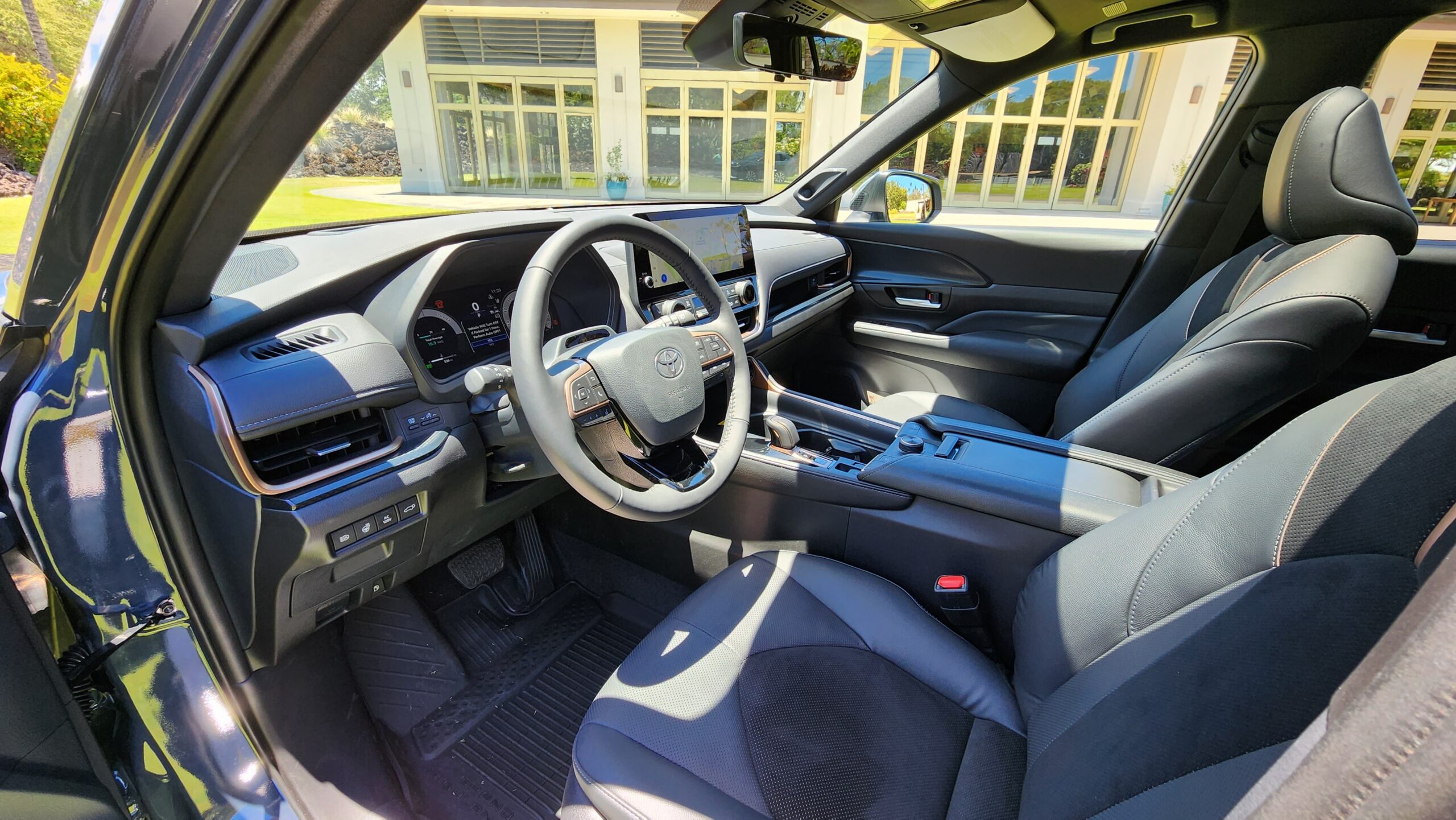
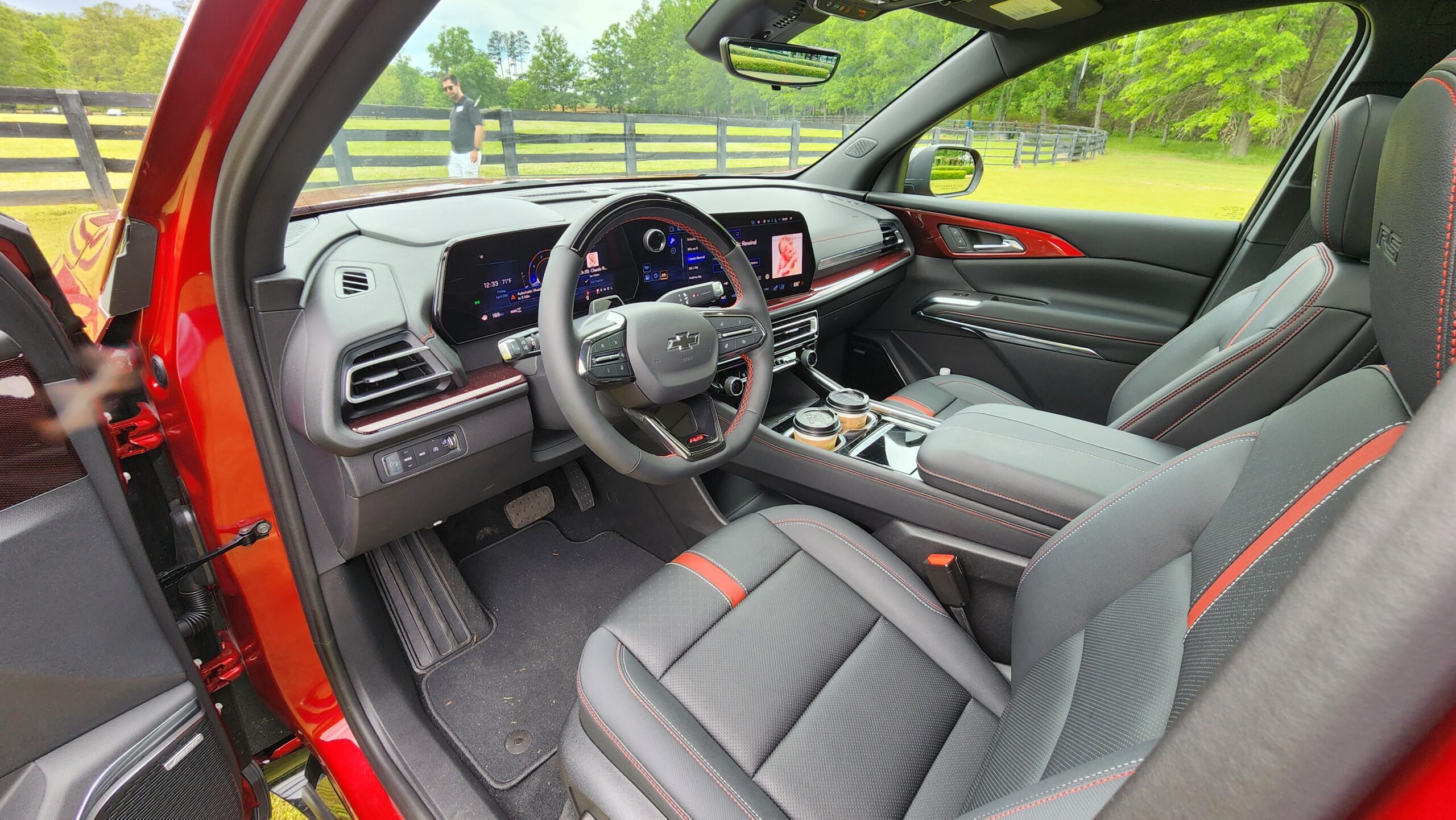
Interior Design
As we walk toward the interiors, both models have smart entry as you would expect, but the Traverse lacks a sensor behind the door handle so you will have to press the chrome button to unlock.
Once we open the doors, we have stark differences in the overall designs, especially since the Chevy carries the sporty theme into the inside as well. Let’s start off with the seats, though. Both are made of real leather, although the Toyota uses some suede as well, and for adjustments, the Chevy has additional 4-way lumbar instead of 2-way.
Regardless though, both have heating, ventilation, and memory.
Once we fully climb inside, we can get into the overall material quality. Both are more on the utilitarian side of things, but there is still plenty of soft-touch plastic and leatherette in common touch points. Both also use a faux carbon fiber design for the trim décor, just dyed red in the RS Traverse. Overall, we will call this area even.
After startup, you’ll see digital gauge clusters on both, with fully customizable graphics. But if you don’t want to divert you gaze to look down, only the Toyota offers a head-up display.
Moving back to the heated leather steering wheels, be aware that power adjustment is a Traverse exclusive feature.
Storage and Technology
Now let’s talk about overall interior storage, which is a huge area that both SUVs are literally huge in. The main center consoles are massive, fitting 17 and 24 donuts in the Traverse and GH respectively. They also have extra cubbies up front, with wireless chargers, and Traverse has a huge center pass through as well. While the Toyota just has a smaller side cubby, it makes up for it with a passenger storage shelf, so we will call this area even as well.
Moving on to the shifters, they are both electronic but in different places, and when shifted into reverse, we have 360-degree cameras on both.
Thankfully, we have classic physical controls for the 3-zone automatic climate systems in both SUV’s, along with classic volume knobs for the audio systems. Let’s go ahead and sample the 10-speaker Bose and 11-speaker JBL audio systems. Overall, they have approximately the same sound quality and an emphasis on bass.
TR: 10-speaker Bose Premium Audio
GH: 11-speaker JBL Premium Sound System
Now let’s address the displays. As you can probably tell, the Traverse’s display is larger, coming in at a massive 17.7-inches vs. a more pedestrian 12.3-inches on the Grand Highlander.
But size aside, there are several features to discuss. Even though both models have wireless AA and ACP, plus integrated navigation, the latest Chevy infotainment software comes with Google apps built-in, meaning you can use the superior Google Maps and Google Assistant without even having to pair a phone.
Last but certainly not least for the front of the interiors, both models have digital camera rearview mirrors and large panoramic sunroofs.
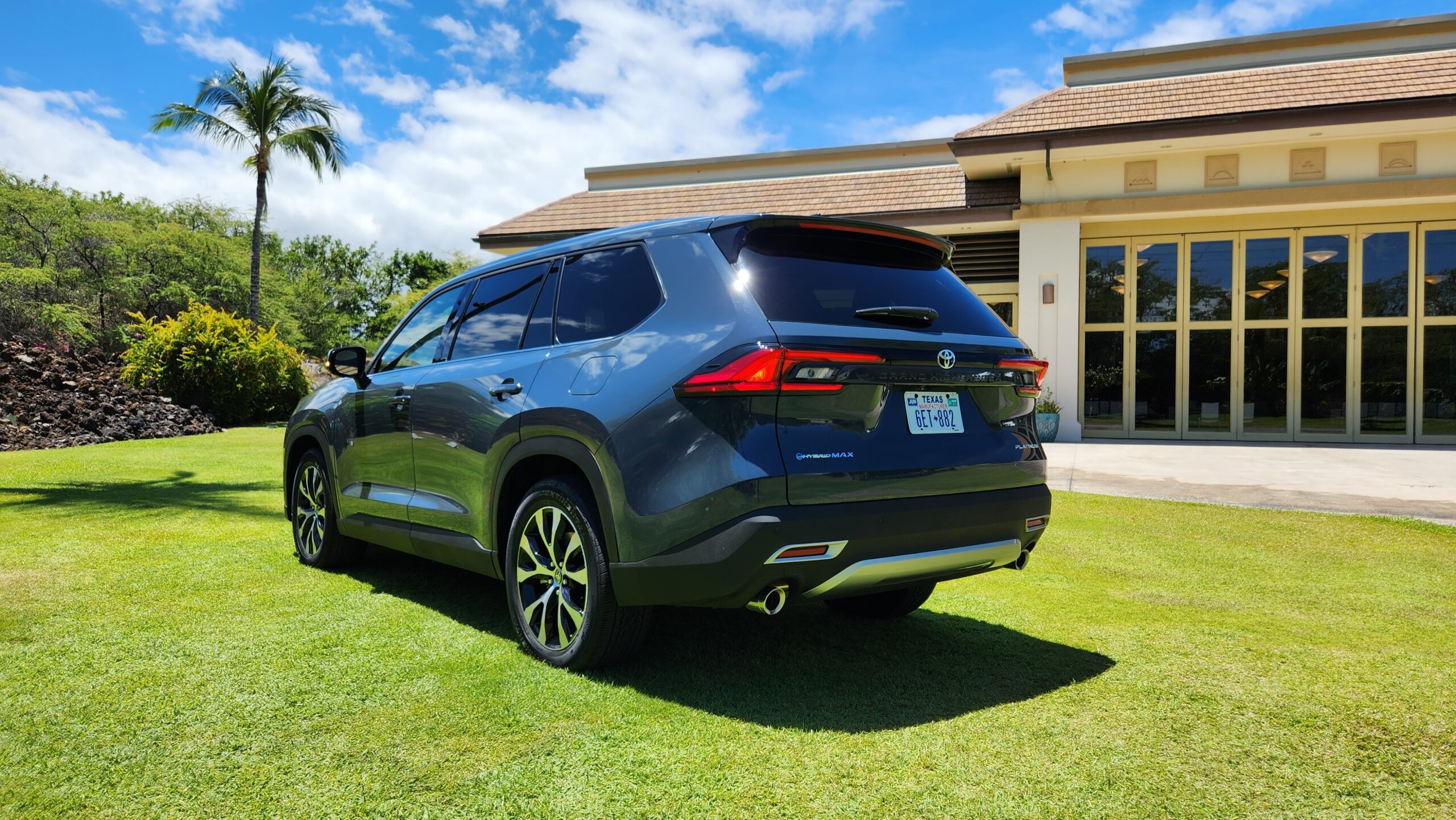
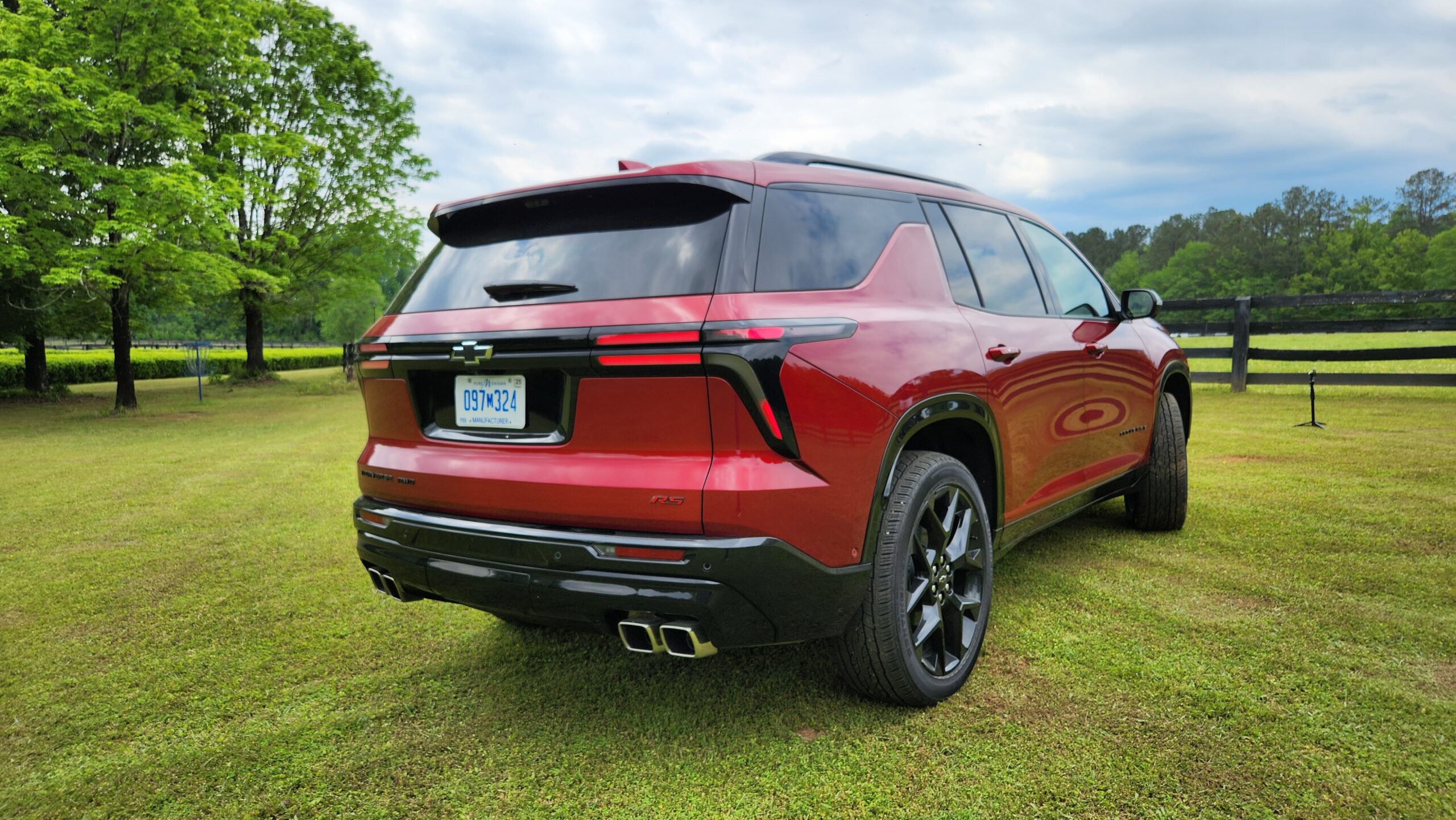
Rear Seats and Cargo
But now let’s move into the rear spaces because this is probably the reason you are interested in SUVs of this size. They will impress here with ample space for all adults. Traverse does have the advantage in legroom, although not by more than 5% required to score a point, and headroom is very similar between them.
- GH: Legroom: 39.5-inches | Headroom: 38.5-inches
- TR: Legroom: 41.5-inches | Headroom: 39.9-inches
The features list is also largely the same. There are rear climate controls, vents, 2 USB ports, and heated rear seats. The other differences are in the Grand Highlander’s favor: it has sunshades and ventilated back seats as well.
Furthermore, the Toyota has a removeable center console with the captain chairs.
Let’s head to the next row of seats. As far as access to the third row, both have sliding mechanisms to make that simple, but the Traverse’s tilt function means you wouldn’t need to remove a child seat if you had one installed.
As far as space is concerned, once back there, they are very similar. Even still, you can see the Grand Highlander’s extra 1.3-inches in the footage, and that allows to cushion to extend a little further and support your thigh’s better.
Both have 3 seats back here, bringing the total capacity to 7, as equipped. There are also USB ports, vents, and reclining abilities to keep people comfortable back here as well.
- GH: Legroom: 33.5-in | Headroom: 37.2-in
- TR: Legroom: 32.2-in | Headroom: 38.2-in
Now heading to the cargo areas next, we have some back-and-forth. First, I want to emphasize that both two are massive and handily would defeat almost any competitor. But when battling each other, they are almost the same at the top of the class. Traverse does have a 10.5% advantage behind the third row, but when all the back seats are folded, it beats GH by only 0.1 cu.ft.
Grand Highlander lacks a power-folding third row and lacks buttons to fold the second row from the back.
Only the Grand Highlander has a 1500-watt outlet in the back, as equipped.
GH: Behind 3rd row: 20.6 cu.ft | Behind 2nd row: 57.9 cu.ft | MAX: 97.5 cu.ft
TR: Behind 3rd Row: 22.9-cu.ft | 2nd Row: 56.6-cu.ft | MAX: 97.6-cu.ft
Alright, that’s it for the interiors, so now let’s take this fight to the streets!
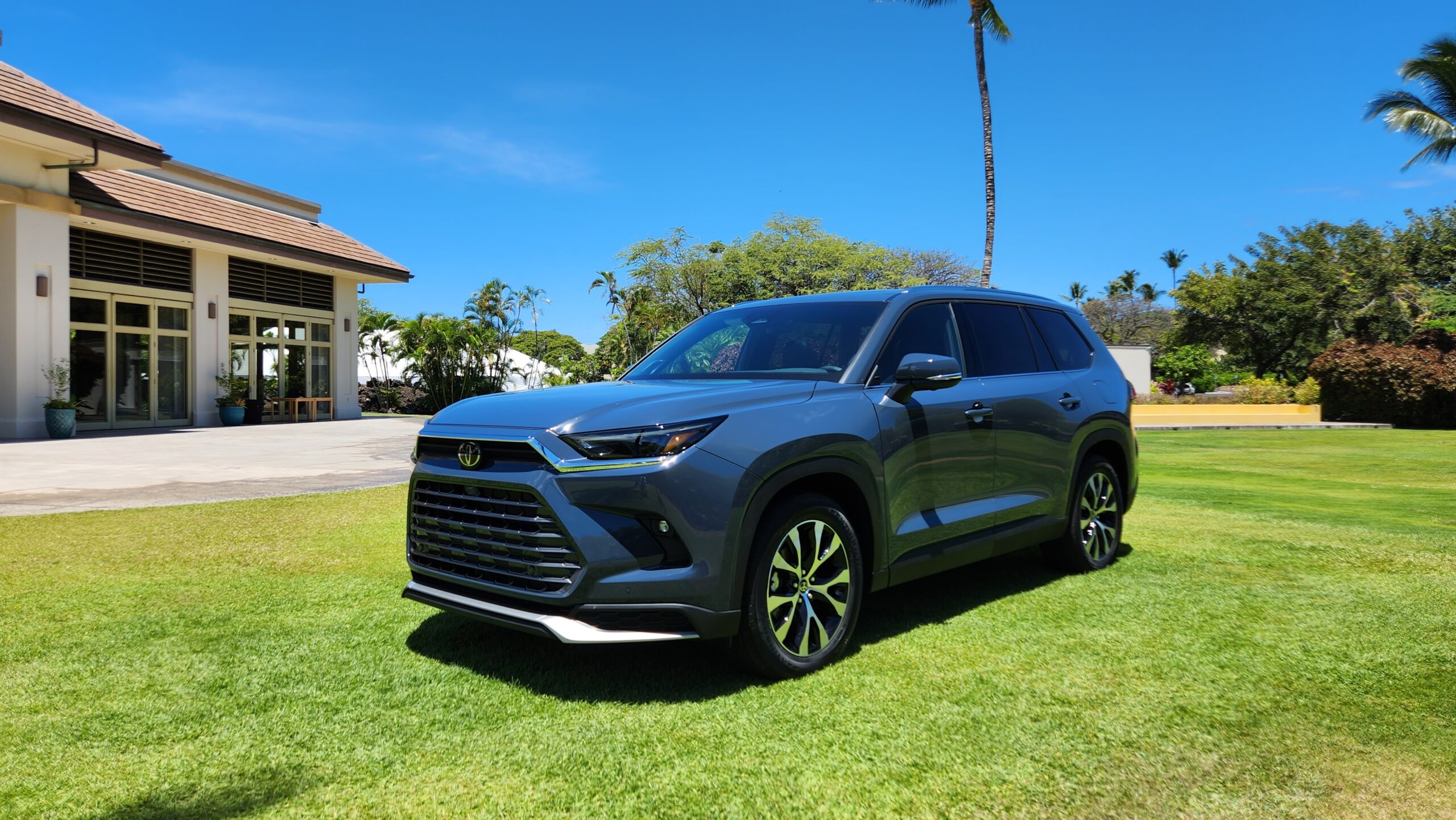
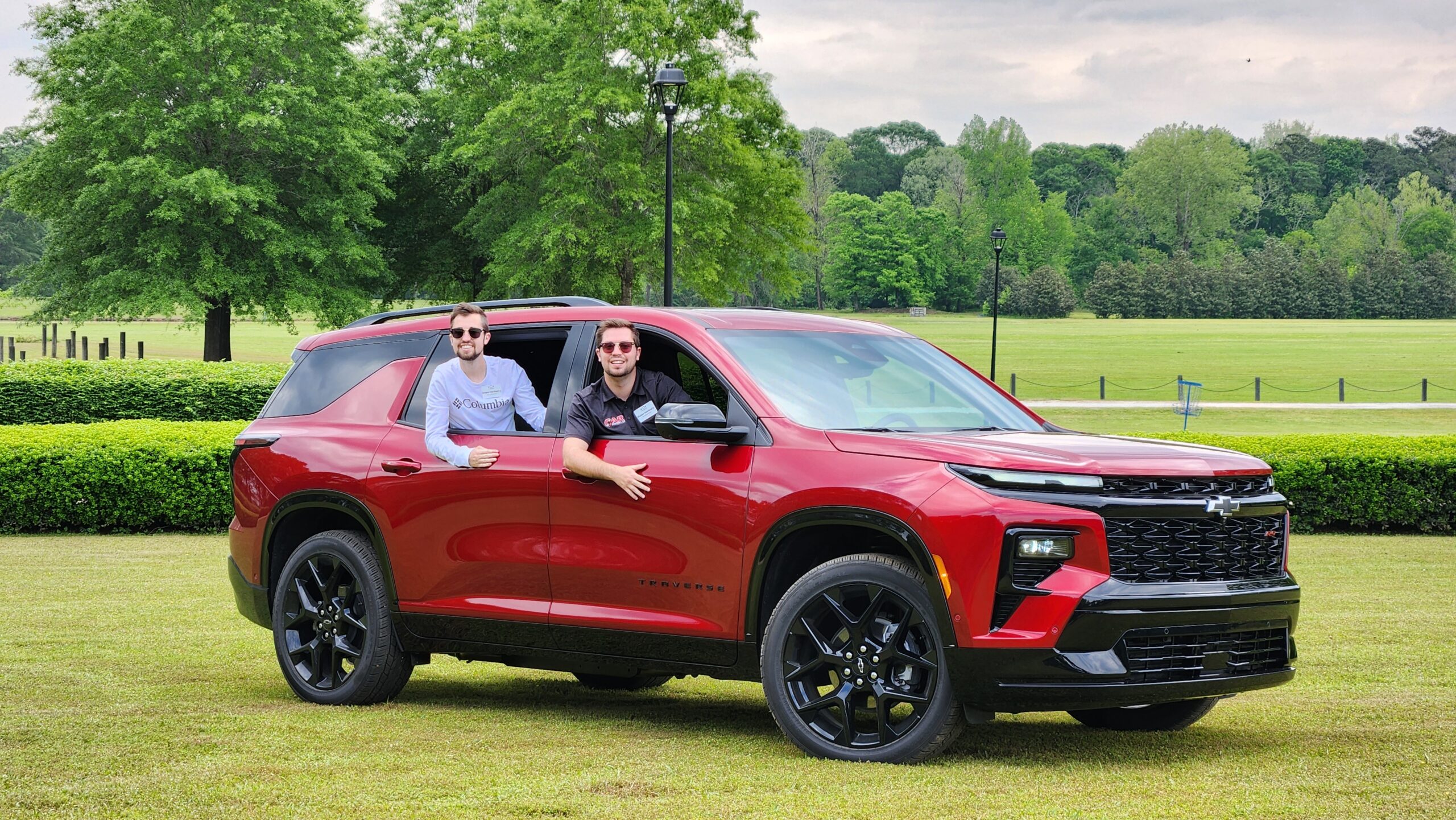
Powertrains
So, what’s under the hoods powering these two? It turns out, very different powertrains with fewer cylinders than you probably expected. The new Traverse is using a 2.5L Turbocharged 4-cylinder engine, making more power than the previous V-6 at 328 hp and 326 lb.ft of torque. The Grand Highlander also has a turbo 4-cylinder engine, but for the near $60,000 price point you instead get the Hybrid Max powertrain. That adds hybrid electric components to a 2.4L turbo-4, making 362 hp and 400 lb.ft of torque. While the Traverse is above average for the class and moves the mass well, the Hybrid Max GH is downright fast feeling.
- Grand Highlander: 2.4L Turbo I-4 + Electric: 362 hp | 400 lb.ft
- Traverse: 2.5L Turbo I-4: 328 hp | 326 lb.ft
As far as the other elements, torque and packaging requirements mean that the Grand Highlander Hybrid Max is actually rocking an old school 6-speed automatic transmission, compared to an 8-speed automatic in the Traverse. While the 6 is still smooth, the Chevy’s transmission is quicker and has more gears to choose from.
Test Drive and Fuel Economy
But it’s definitely not all about speed since comfort is extremely important for family crossovers. Both do a good job isolating out most potholes but the Toyota will be more on the plush side of things than the Chevy which is riding on those large 22-inch alloy wheels. Other trims of the Traverse come with smaller wheels and have rides that are closer to the Toyota’s.
Both their suspensions are pretty soft with a reasonable amount of body roll when cornering.
In addition to having comfy rides, let’s talk about the noise levels in the cabins. Here at Car Confections, we take sound level readings for all the vehicles we review, and with these samples the Grand Highlander was the quieter of the two. However, the Traverse’s sample was taken on a media drive in Georgia instead of our designated Kentucky road, so we won’t be able to score this until we get the Traverse back home.
Grand Highlander: 55.0 dB @ 55 MPH
Traverse: 57.7 dB @ 55 MPH
And the last on-the-road item to discuss is fuel economy. This is one of the biggest advantages on Hybrid Max Grand Highlander because it has big power and still gets 27 MPG combined, which is exactly 6 more than the Traverse.
- GH H-M AWD: 26/27/27 MPG
- Traverse AWD: 19/24/21 MPG
Resale and Reliability
In our reviews and comparisons, we are also adding in reliability and resale information to give you a better picture of the overall value beyond just the original MSRP.
Beginning with reliability, we developed the Combined Reliability Index, which considers several studies from trustworthy sources, and combines them in a way that gives a more realistic picture. This is very interesting because Toyota and Chevy are the best and second-best brands in the industry by this metric. They are 15 and 16 slots ABOVE industry average.
We also put Mason’s economics degree to work to develop a detailed Predicted Resale Value tool. After 5 years and 60,000 miles, we have more of a discrepancy between them. Toyota has the 2nd highest predicted resale value of 64.5% and Chevy is 8 slots below it with a PRV score of 54.7%
Resale is obviously important because it determines how much money you get back, but we can’t forget about the price difference at the original purchase. The Grand Highlander costs $1,370 more than the Traverse.
I want to emphasize that if money, reliability or resale value matter less to you personally, feel free to disregard these points. And if you’d like to check out all our data about reliability and resale values, as well as learn about our methodology, make sure to head to www.carconfections.com/resale and www.carconfections.com/reliability. Buying a car is a big decision, and this is a great place to compare all the makes you might be cross-shopping.
2024 Toyota Grand Highlander vs. 2024 Chevy Traverse winner!
So that’s it for another exciting comparison, this time between two of the newest and biggest options your family could buy! Let’s quickly recap here and discuss who should be “your” personal winner.
Traverse:
- Top tier technology
- Super Cruise
- Power-folding third row and slight cargo advantage
Grand Highlander:
- Hybrid powertrain experience (very powerful and better fuel economy)
- Better resale value
- Larger third row
Now we want to know your opinions, so make sure to head to the comment section and let us know which one you would pick!
Thanks for joining us for another Car Confections Comparison! We’ll catch you next time as we sample the latest automotive delicacies!


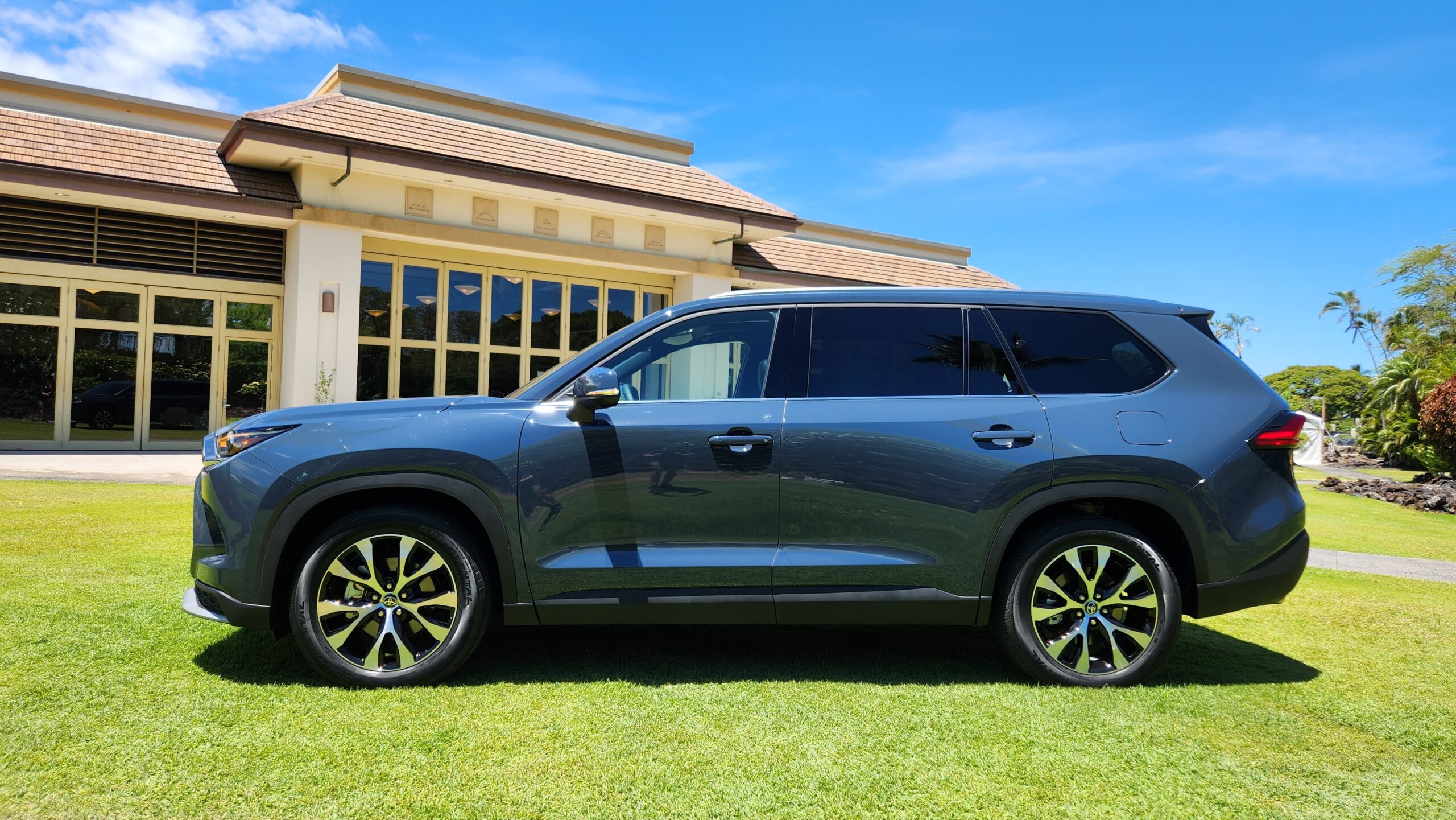
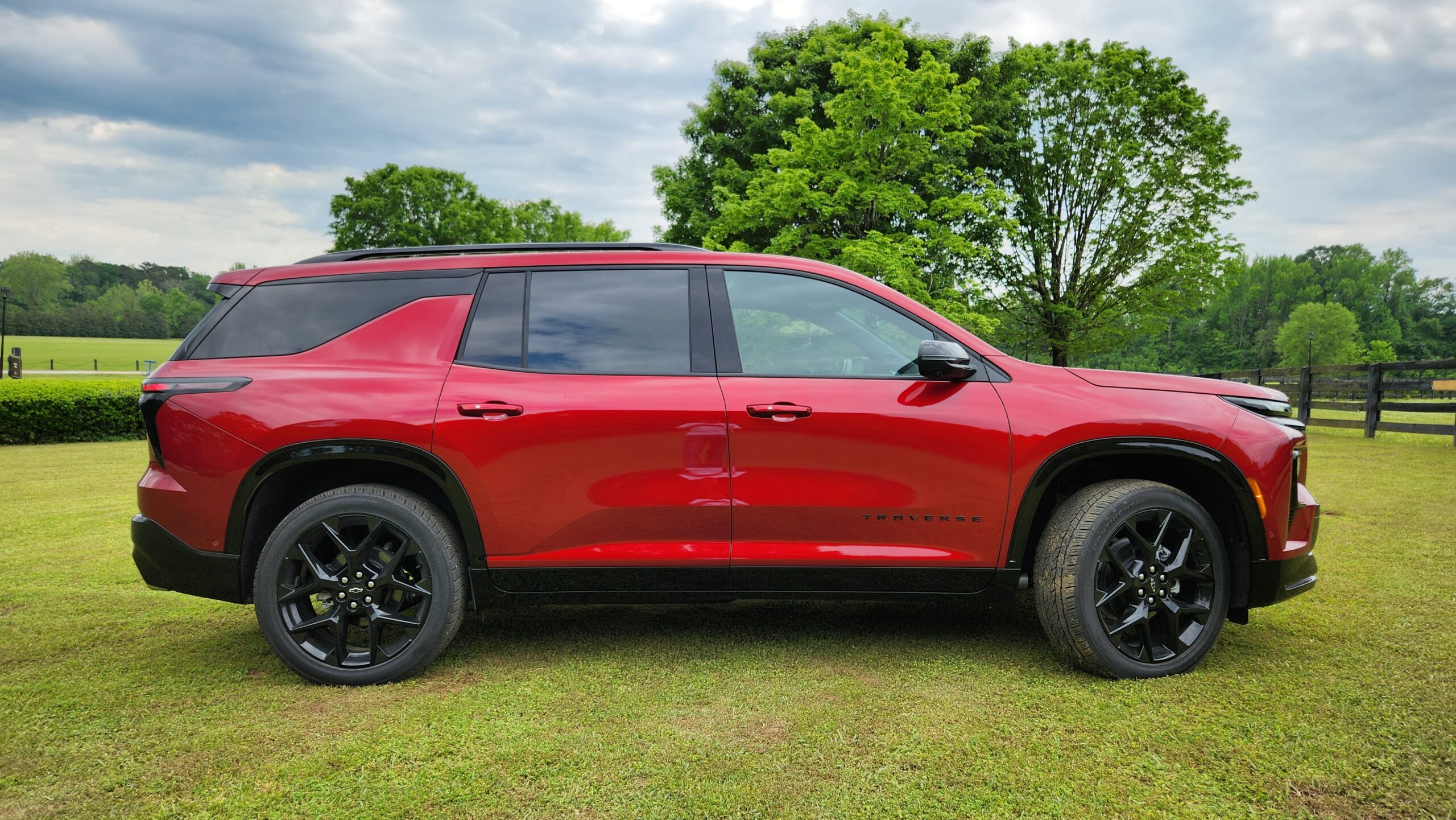
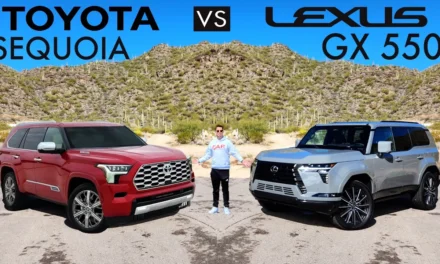


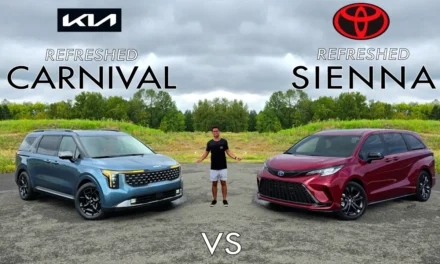






Recent Comments